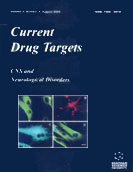Abstract
The characteristic hallmarks of Alzheimers disease (AD), the most common form of dementia in the elderly, include senile plaques, mainly composed of beta-amyloid (Aβ) peptide, neurofibrillary tangles and selective synaptic and neuronal loss in brain regions involved in learning and memory. Genetic studies, together with the demonstration of Aβ neurotoxicity, led to the development of the amyloid cascade hypothesis to explain the AD-associated neurodegenerative process. However, a modified version of this hypothesis has emerged, the Aβ cascade hypothesis, which takes into account the fact that soluble oligomeric forms and protofibrils of Aβ and its intraneuronal accumulation also play a key role in the pathogenesis of the disease. Recent evidence posit that synaptic dysfunction triggered by non fibrillar Aβ species is an early event involved in memory decline in AD. The current understanding of the molecular mechanisms responsible for impaired synaptic function and cognitive deficits is outlined in this review, focusing on oxidative stress and disturbed metal ion homeostasis, Ca2+ dysregulation, mitochondria and endoplasmic reticulum dysfunction, cholesterol dyshomeostasis and impaired neurotransmission. The activation of apoptotic cell death as a mechanism of neuronal loss in AD, and the prominent role of neuroinflammation in this neurodegenerative disorder, are also reviewed herein. Furthermore, we will focus on the more relevant therapeutical strategies currently used, namely those involving antioxidants, drugs for neurotransmission improvement, hormonal replacement, γ- and β- secretase inhibitors, Aβ clearance agents (Aβ immunization, disruption of Aβ fibrils, modulation of the cholesterol-mediated Aβ transport), nonsteroidal anti-inflammatory drugs (NSAIDs), microtubules stabilizing drugs and kinase inhibitors.
Keywords: beta-amyloid, tau, neuroinflammation, synaptic dysfunction, oxidative stress, neurotransmission, cholesterol, therapeutics
 2
2

















